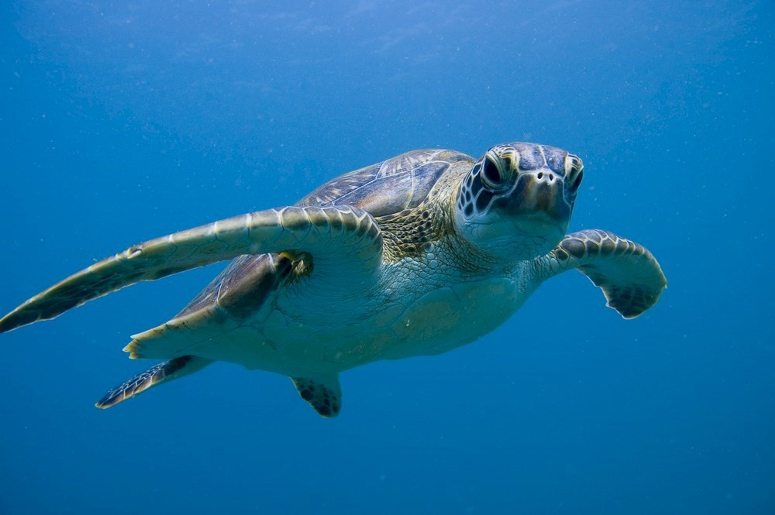SEA LIFE Aquarium Welcomes a Loggerhead Sea Turtle
SEA LIFE Orlando Aquarium has welcomed a loggerhead sea turtle named Ted to its new home in Orlando. This new addition is a rescue turtle acquired by the Florida Fish and Wildlife Conservation Commission. Ted received his name after being one of the first turtles used to test at-sea Turtle Excluder Devices (TEDs) in scallop/whelk fisheries by the National Marine Fisheries Service (NMFS).
TEDs are escape hatches in fishing nets that allow turtles to escape if trapped.
TEDs are escape hatches in fishing nets that allow turtles to escape if trapped.
Each year NMFS conducts at-sea certification trials to determine designs, modifications and different configurations of TEDs that are safe for sea turtles and may be used in the United States.
Ted was released in St. Josephs Bay in the Panhandle area of Florida in late 2002. He was observed swimming offshore for many days in the same area. Despite multiple attempts at a release, Ted continued to return to shore and show behavior that was not consistent with survival in the natural habitat.

“Ted has played an integral role in making the ocean safe for all turtles,” said Andrew Nerness, Displays Curator, SEA LIFE Orlando Aquarium. “We are so happy to be able to provide a new home for a loggerhead sea turtle here at SEA LIFE, who would not be able to survive in the wild on its own.”
Ted joins new neighbors such as Chely (a rescued green sea turtle), sandbar sharks, sea horses, Everglades Pygmy sunfish, butterflyfish, triggerfish, moray eels and more than 5,000 other sea animals that are featured in more than 32 display habitats from the oceans and waters of the world.
Fun Facts about loggerhead turtles:
- Loggerhead turtles are named for their large heads;
- They are carnivores who eat crustaceans, fish and mollusks;
- A distinctive reddish-brown plastron (shell top) is unique to loggerheads;
- As juveniles, raccoons, wild pigs, crabs, birds, sharks, fish, humans (for their eggs) are considered predators to young loggerheads, while sharks and humans are threatening to adult loggerheads;
- The first 6-12 years of their lives are spent floating in the open ocean in floating sargassum (seaweed) before returning to shallow, coastal waters;
- Loggerheads confuse plastic bags and balloons for jellies which cause blockage in digestive tract, visitors are encouraged to use reusable bags and never release balloons;
- They are also accidentally caught by commercial and recreational fishermen or tangled in fishing gear, SEA LIFE urges guests to choose Sustainable Seafood (with help of Seafood Watch) to ensure seafood is caught using turtle-friendly methods;
- The Development of TEDs (Turtle Excluder Devices) has reduced accidental turtle catches in fisheries, TEDs create an escape hatch for turtles but don’t allow the desired catch to escape.
PHOTO: © 2016 SEA LIFE Orlando Aquarium. All Rights Reserved.


Post a Comment